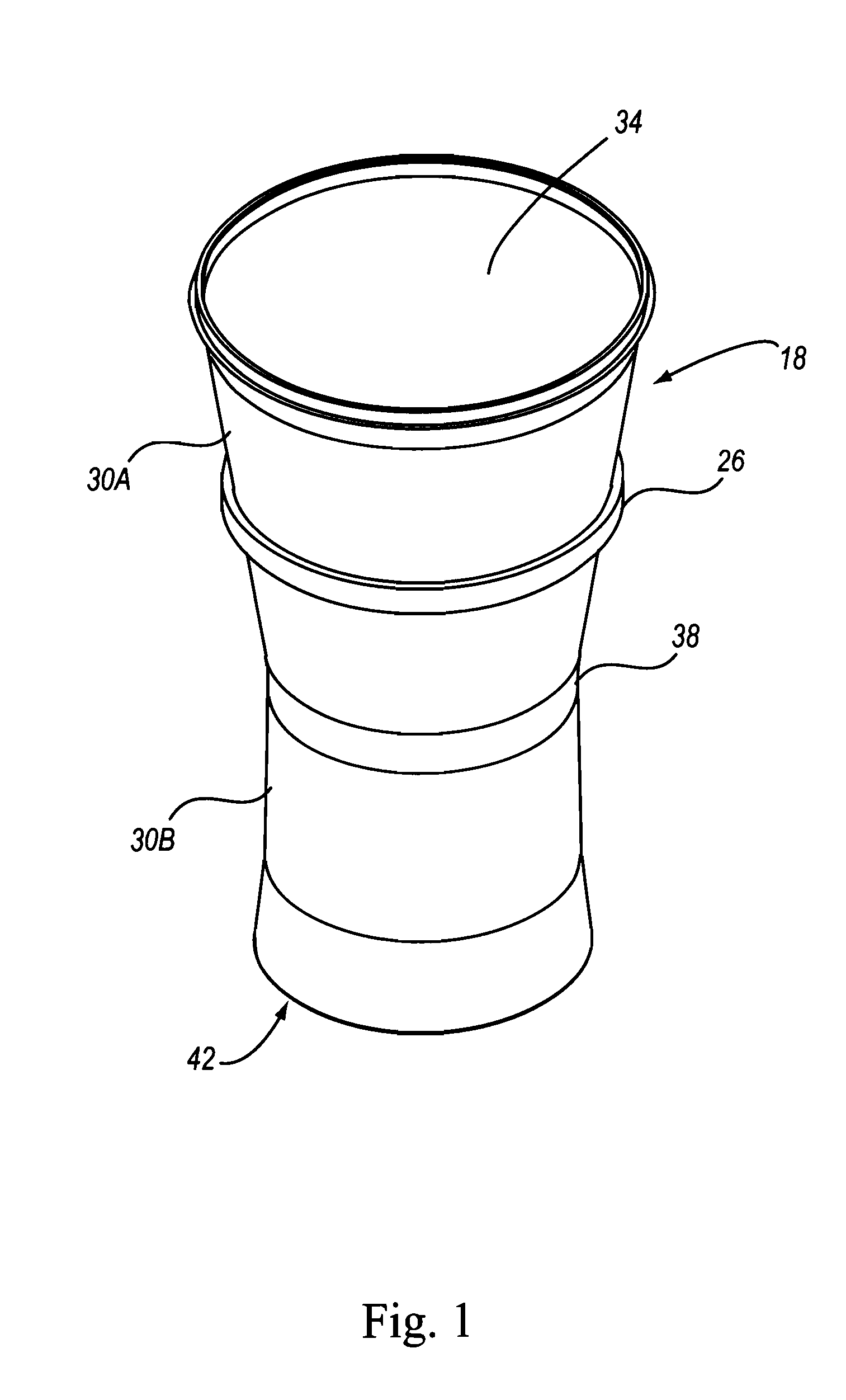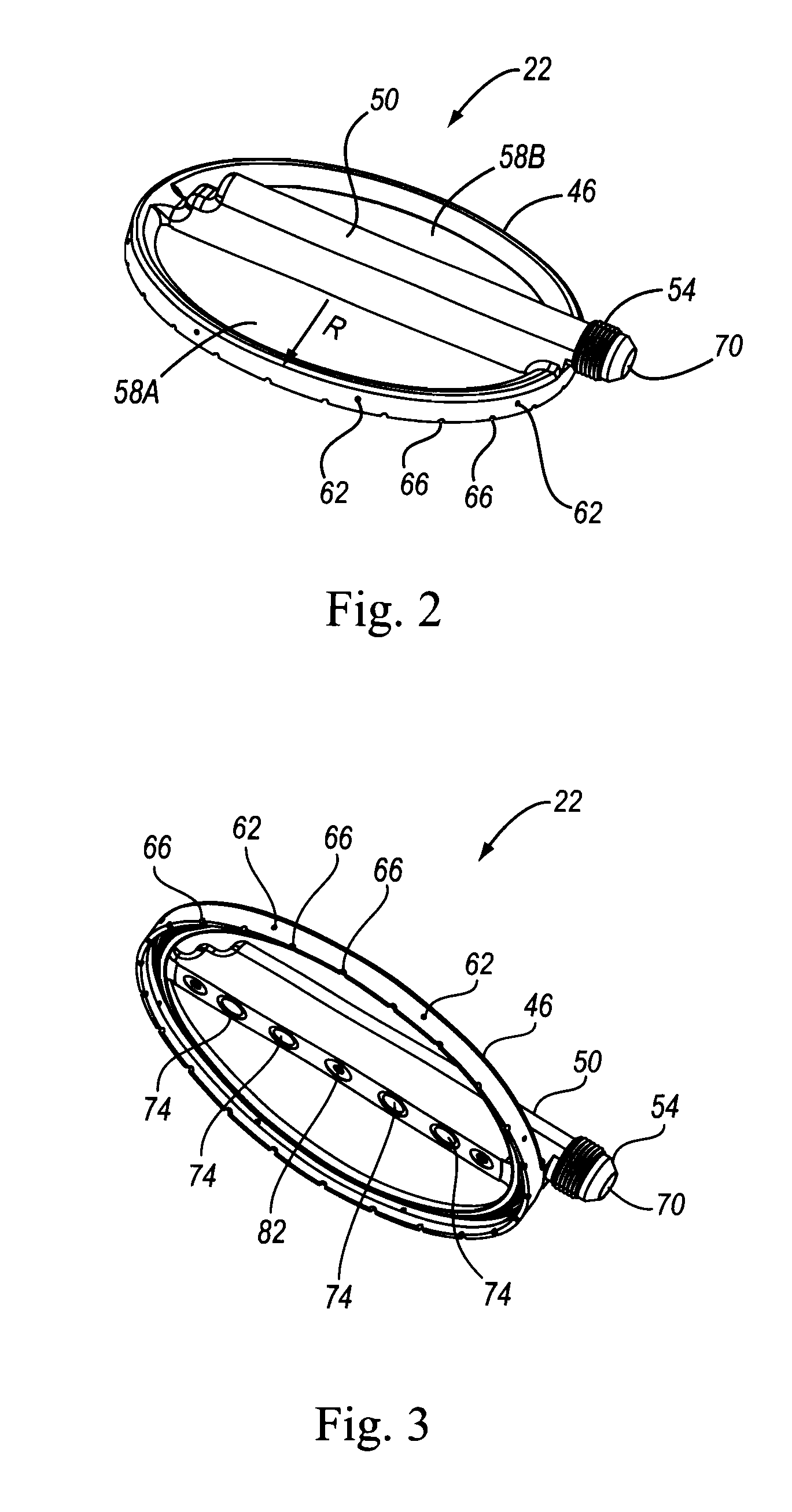Aspirators with bodies comprising wound filaments
a technology of wound filaments and aspirators, which is applied in the field of aspirators, can solve the problems of material being susceptible to degradation, and the possibility of disadvantage in drilling gas-entry apertures through the walls of the housing, so as to reduce the overall weight of the device
- Summary
- Abstract
- Description
- Claims
- Application Information
AI Technical Summary
Benefits of technology
Problems solved by technology
Method used
Image
Examples
Embodiment Construction
[0035]Illustrated in FIG. 9 is exemplary aspirator 10 consistent with the present invention. Aspirator 10 may be formed of housing 14 comprising body 18 and top cap assembly 22. Body 18 preferably has circular cross-section, albeit with diameter varying along its length L. Body 18 may, however, be shaped other than as depicted in FIGS. 1 and 9.
[0036]Contrasted with conventional aspirator housing bodies, body 18 beneficially may be formed as a monolithic structure of wound filaments rather than of one or more machined metal components. Filaments of carbon, aramids (including Kevlar), fiberglass, or otherwise may be wound to create body 18, providing the body 18 with satisfactory strength while reducing its weight substantially as compared with conventional metallic bodies.
[0037]Protruding externally from body 18 is flange 26. The flange 26 preferably is annular, although it may assume other shapes instead. Regardless of its shape, however, flange 26 is intended to engage a complement...
PUM
 Login to View More
Login to View More Abstract
Description
Claims
Application Information
 Login to View More
Login to View More - R&D
- Intellectual Property
- Life Sciences
- Materials
- Tech Scout
- Unparalleled Data Quality
- Higher Quality Content
- 60% Fewer Hallucinations
Browse by: Latest US Patents, China's latest patents, Technical Efficacy Thesaurus, Application Domain, Technology Topic, Popular Technical Reports.
© 2025 PatSnap. All rights reserved.Legal|Privacy policy|Modern Slavery Act Transparency Statement|Sitemap|About US| Contact US: help@patsnap.com



